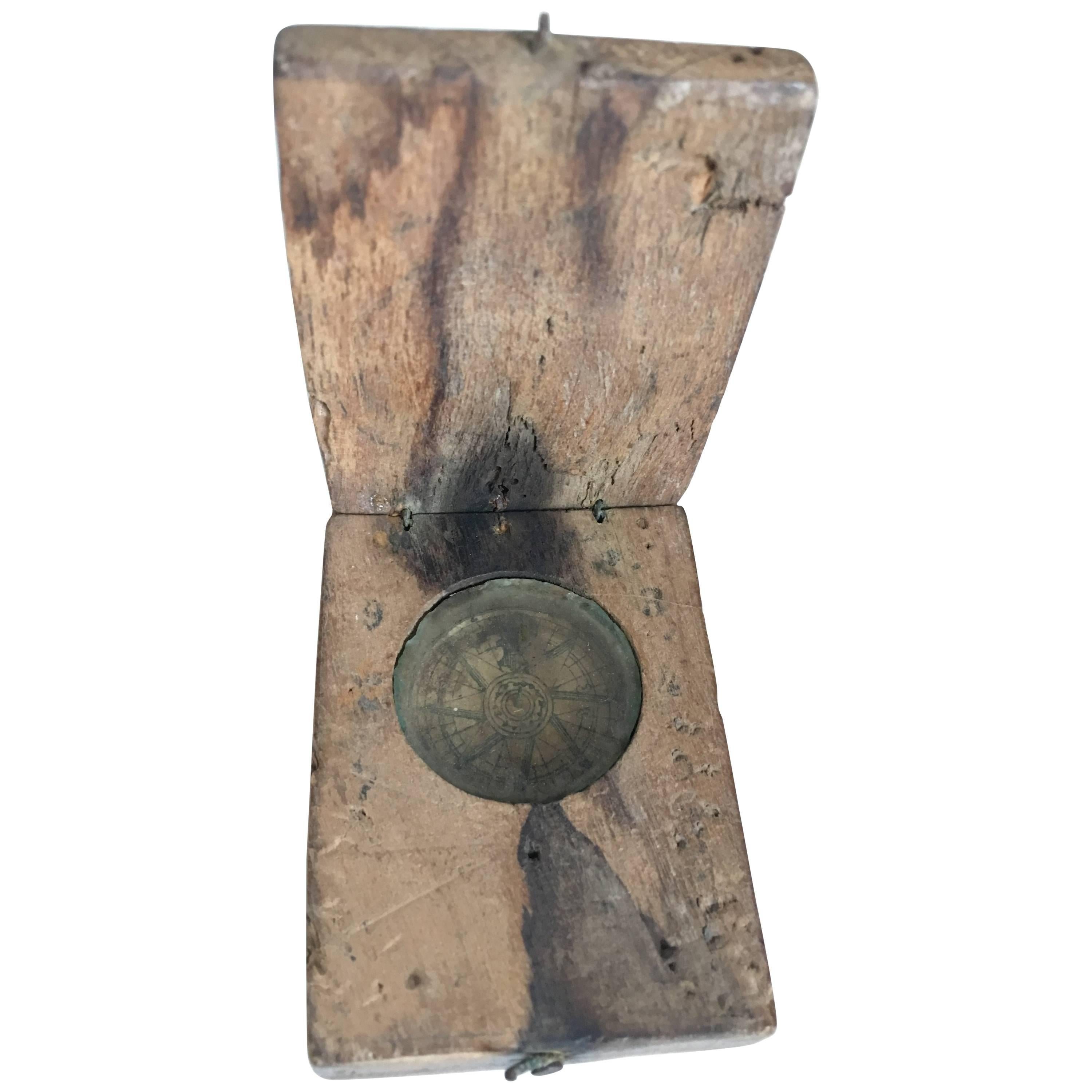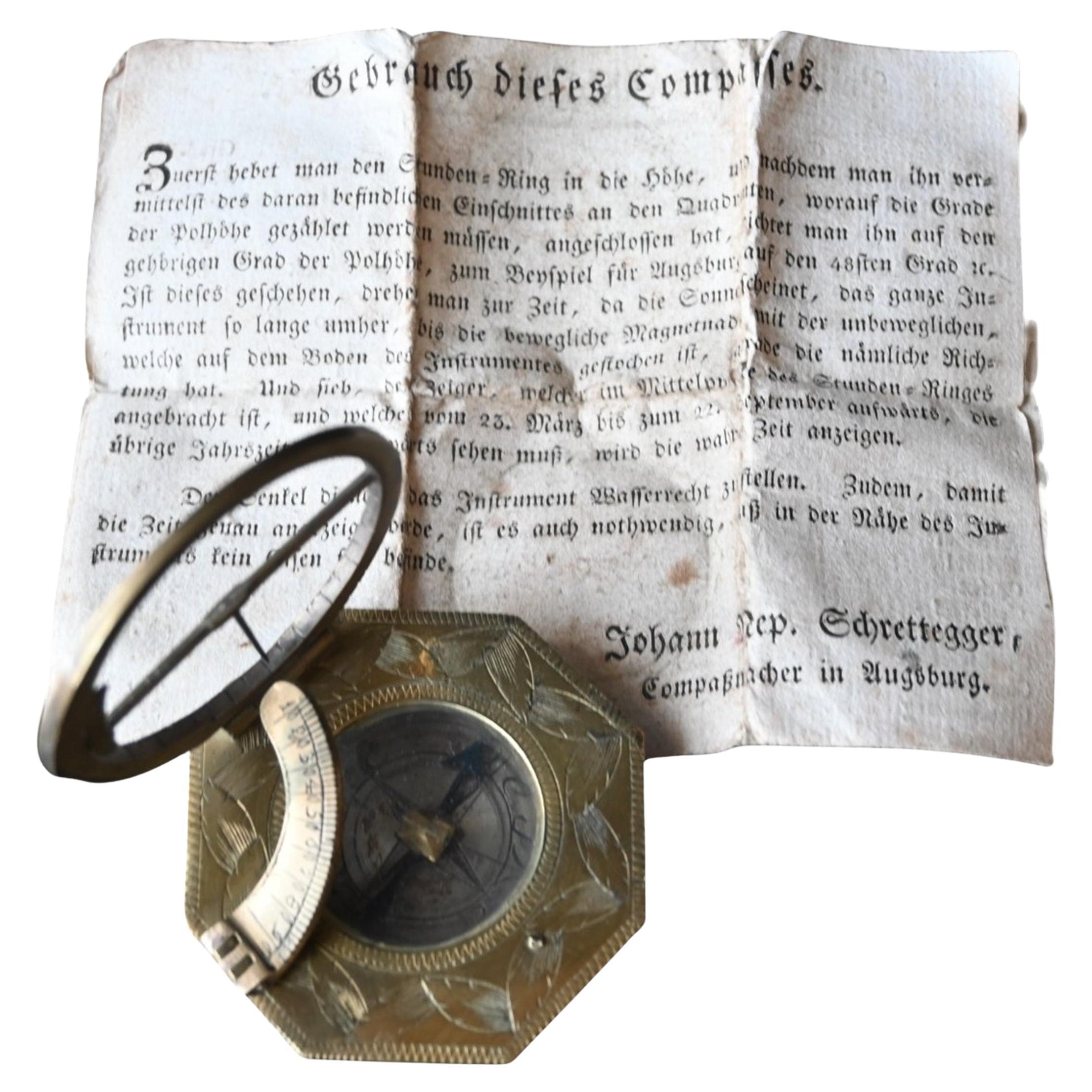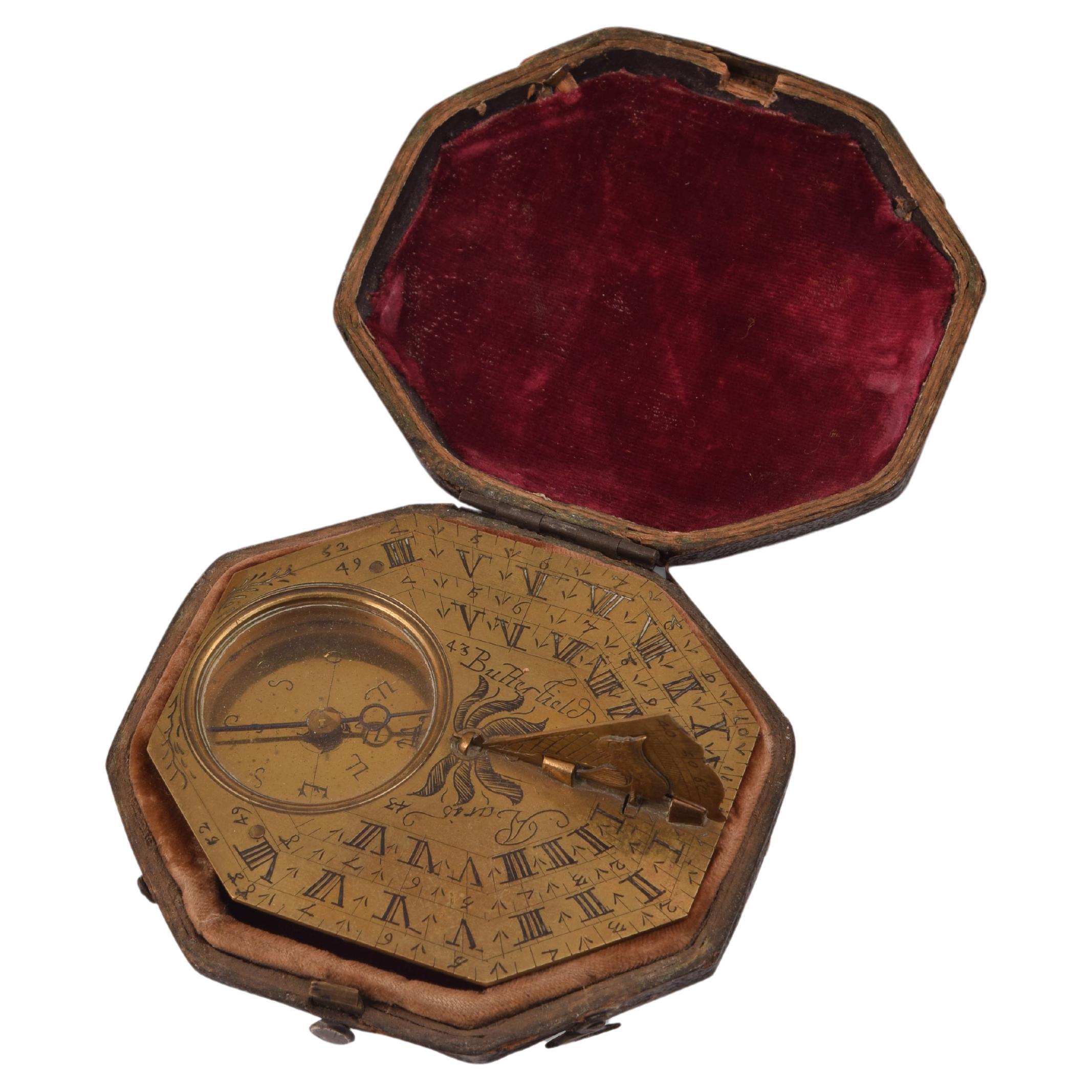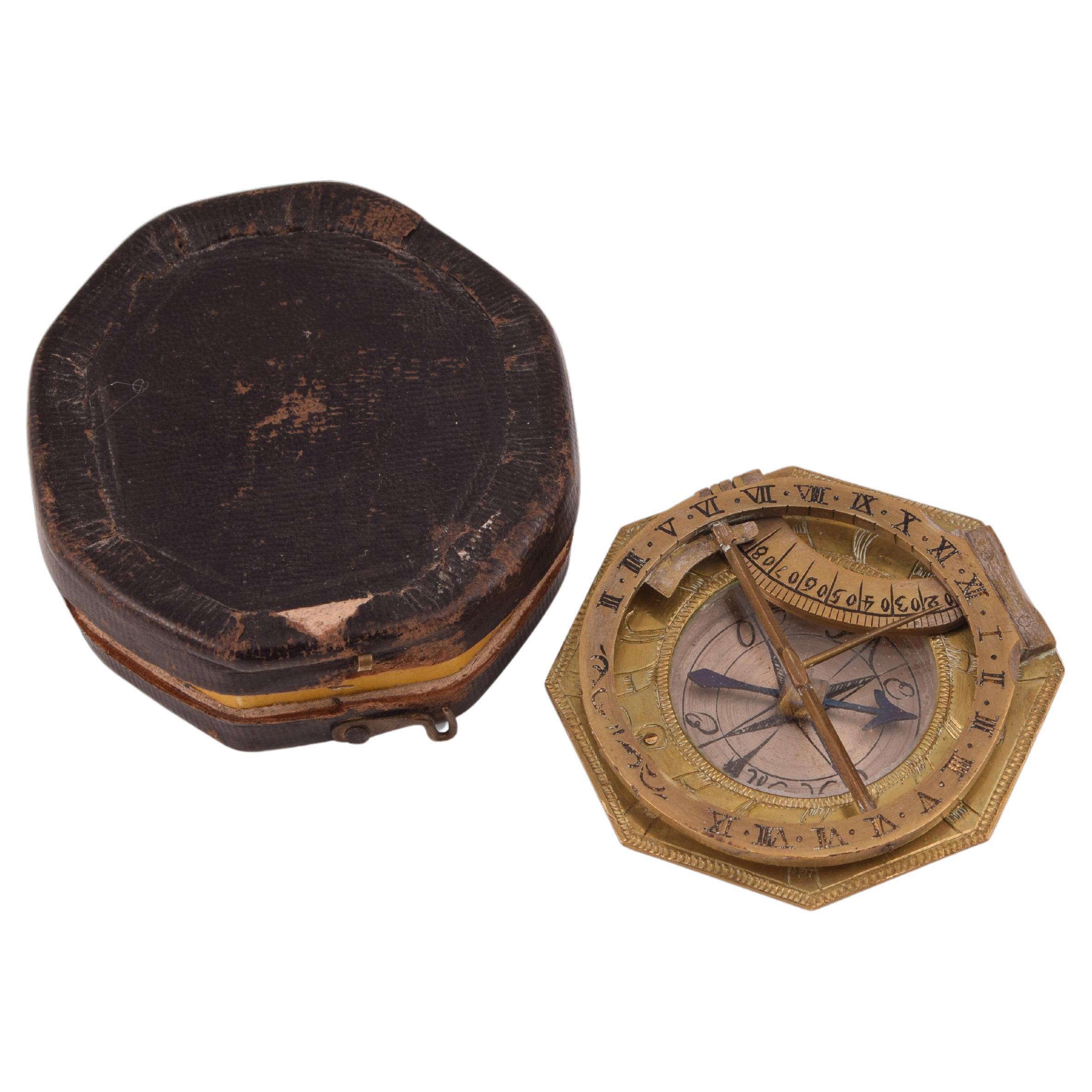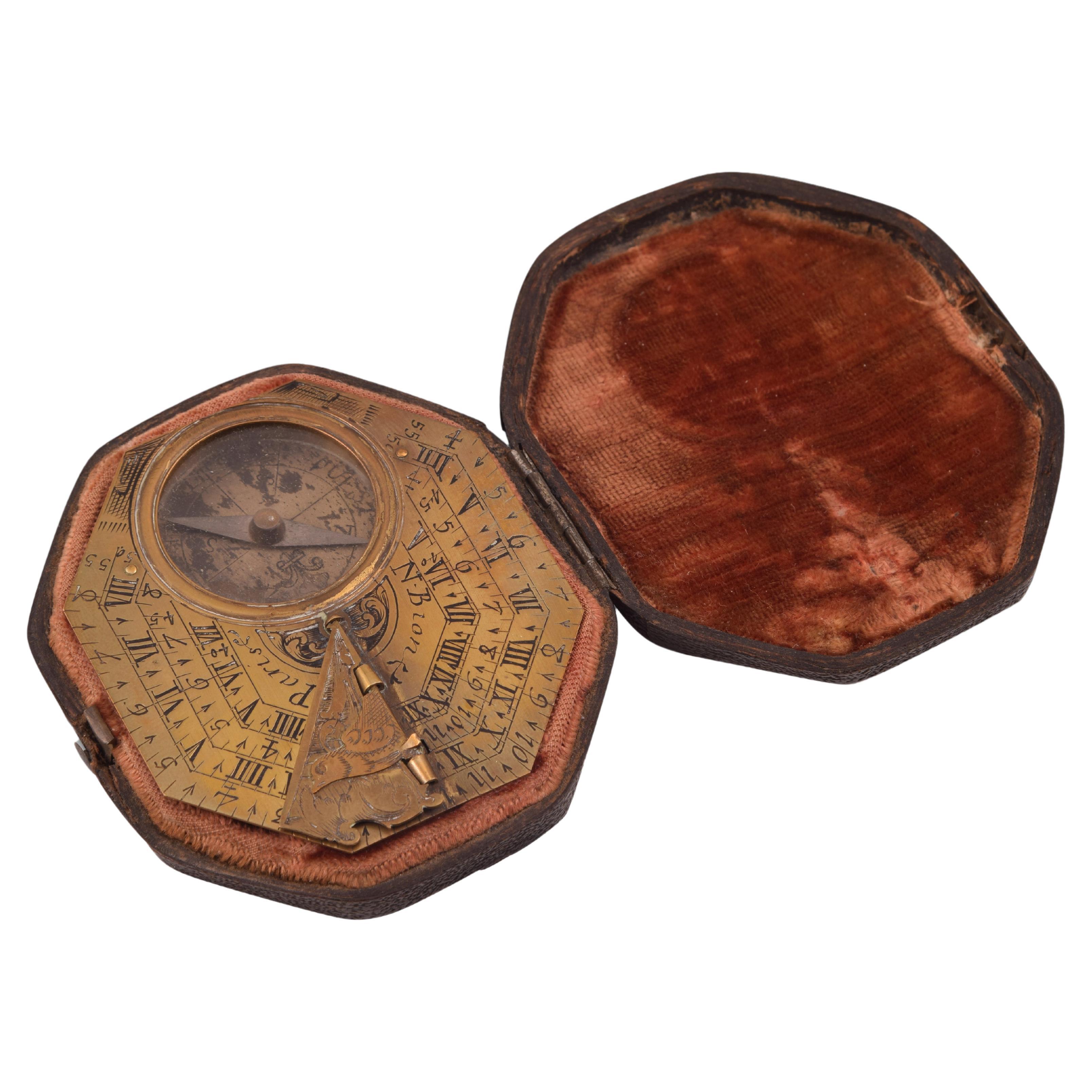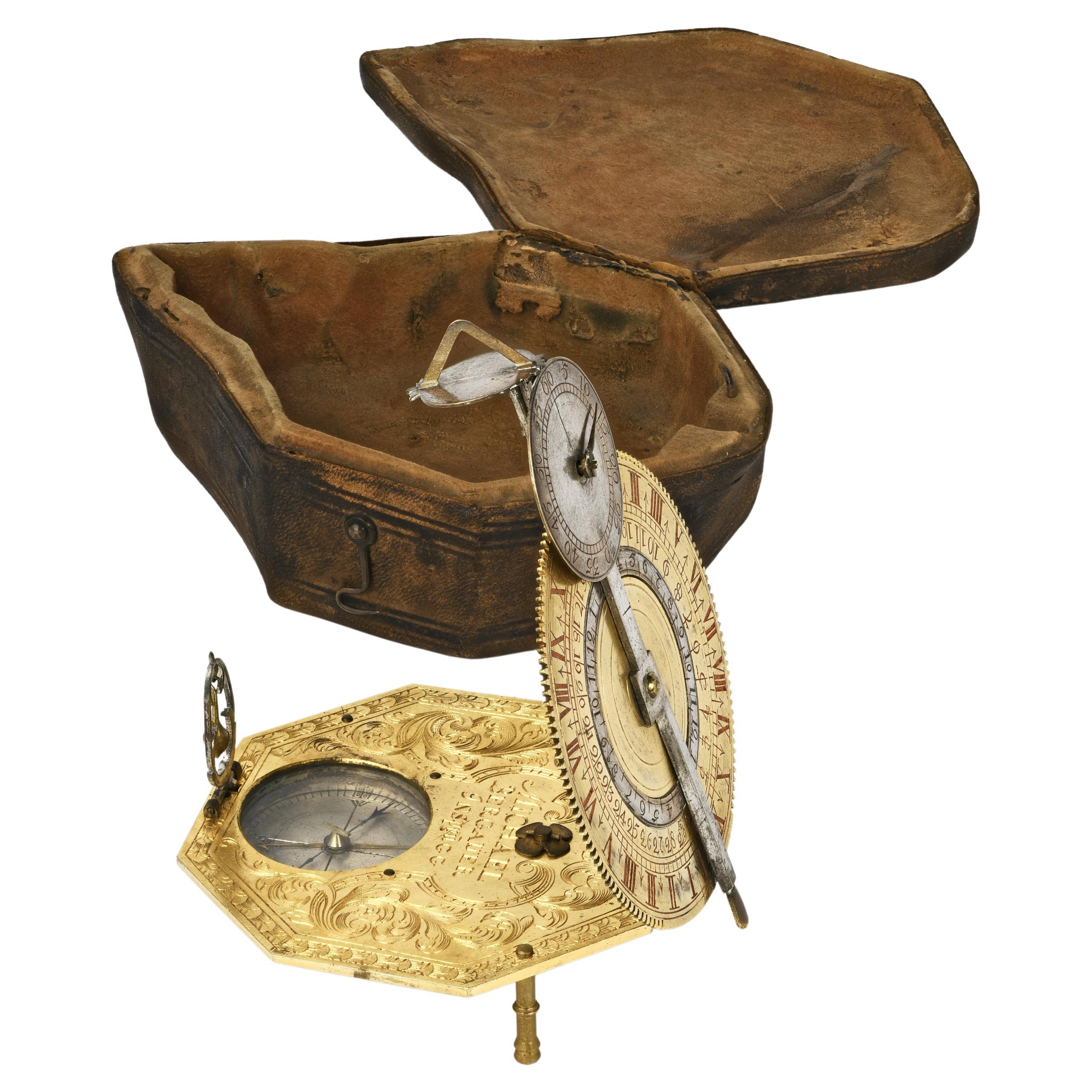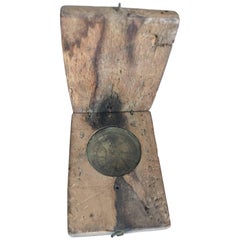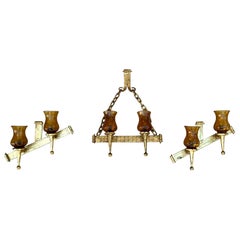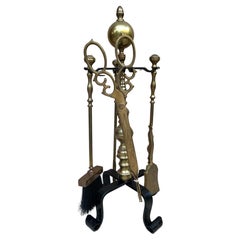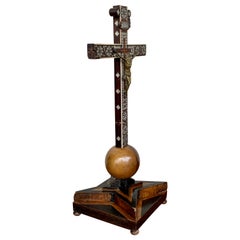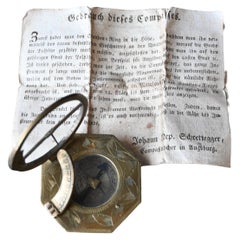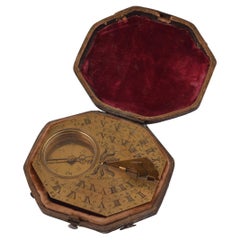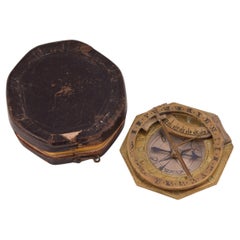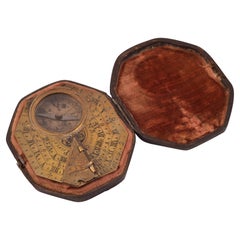Items Similar to 19th Century Compass and Sundial Together
Want more images or videos?
Request additional images or videos from the seller
1 of 7
19th Century Compass and Sundial Together
$1,050
£801.53
€921.41
CA$1,477.54
A$1,643.08
CHF 862.98
MX$20,088.34
NOK 10,753.59
SEK 10,137.73
DKK 6,876.70
About the Item
19th century compass and sundial together.
- Dimensions:Height: 2.75 in (6.99 cm)Width: 1.96 in (4.98 cm)Depth: 0.78 in (1.99 cm)
- Style:Baroque (Of the Period)
- Materials and Techniques:
- Place of Origin:
- Period:
- Date of Manufacture:circa 1870
- Condition:Wear consistent with age and use.
- Seller Location:Miami, FL
- Reference Number:1stDibs: LU172627533373
About the Seller
4.7
Platinum Seller
Premium sellers with a 4.7+ rating and 24-hour response times
Established in 1995
1stDibs seller since 2015
1,310 sales on 1stDibs
Typical response time: <1 hour
- ShippingRetrieving quote...Shipping from: Miami, FL
- Return Policy
Authenticity Guarantee
In the unlikely event there’s an issue with an item’s authenticity, contact us within 1 year for a full refund. DetailsMoney-Back Guarantee
If your item is not as described, is damaged in transit, or does not arrive, contact us within 7 days for a full refund. Details24-Hour Cancellation
You have a 24-hour grace period in which to reconsider your purchase, with no questions asked.Vetted Professional Sellers
Our world-class sellers must adhere to strict standards for service and quality, maintaining the integrity of our listings.Price-Match Guarantee
If you find that a seller listed the same item for a lower price elsewhere, we’ll match it.Trusted Global Delivery
Our best-in-class carrier network provides specialized shipping options worldwide, including custom delivery.More From This Seller
View All19th Century, Compass and Sundial Together
Located in Miami, FL
19th century, compass and sundial together.
Category
Antique Late 19th Century French Baroque Scientific Instruments
Materials
Wood
20th Century Set of French Decorative Gilt Wrought Iron Sconces
Located in Miami, FL
20th century set of French decorative gilt wrought iron sconces with glass shadows.
Measures: Pair sconces: W 14.56in, D 4.72in, H 8.26in.
Category
20th Century French French Provincial Wall Lights and Sconces
Materials
Iron
French Neoclassical Style Brass Fireplace Tools, 1970s, Set of 5
Located in Miami, FL
Neoclassical style brass fireplace tools. French. Circa 1970.
Category
Late 20th Century Spanish Mid-Century Modern Fireplace Tools and Chimney...
Materials
Bronze, Iron
Art Deco Hand Carved Wooden Crucifix with Stunning Bronze Corpus of Christ
Located in Miami, FL
Crucifix from the mid-1800s with a carved shroud or veil depicting Christ in the base. This unique and remarkable antique crucifix can both be used as a table and as a wall crucifix. Over the decades we have sold a number of unique and very well crafted crucifixes, but never one in the Art Deco style with this combination of materials and techniques. The overall design and size is what stands out first, but the details and the materials are what make this antique work of religious art extraordinary. The relatively large base of this unique crucifix is a work of religious art in its own right. It is almost as if the cross is growing from this beautiful base and the cross itself too comes with a number of superbly inlays details. With their symbolic meaning of birth and resurrection it is obvious why the artist / sculptor so tastefully incorporated them here. Apart from a minor 'lean' to the left, the cross itself too is in excellent condition. If one were to speak of a trinity in this crucifix then the unique base and cross are completed with an equally striking, solid bronze corpus of Christ...
Category
Mid-20th Century European Art Deco Religious Items
Materials
Bronze
Bronze and Brass Valet Stand Dressboy, 1940s
Located in Miami, FL
Bronze and brass valet stand dressboy, 1940s
A gentleman's valet with many interesting details.
The valet is in a very good original condition w...
Category
Early 20th Century French Neoclassical Revival Coat Racks and Stands
Materials
Bronze
Antique Metal Scroll Document Holder, circa 1900
Located in Miami, FL
Antique metal scroll document holder, circa 1900
Antique metal scroll holder, circa 1900. The cylindrical container with relief scenic repoussé work dec...
Category
20th Century French Tobacco Accessories
Materials
Metal
$700 Sale Price
20% Off
You May Also Like
Rare 18th Century Equatorial Sundial And Compass By Johann Nepomuk Schrettegger
Located in Bilzen, BE
"Rare 18th Century Equatorial Sundial And Compass By Johann Nepomuk Schrettegger,"
Rare 18th-Century Equinoctial Sundial & Compass by Johann Nepomuk Schrettegger, Augsburg
Maker: Joh...
Category
Antique 18th Century German Louis XVI Scientific Instruments
Materials
Brass
Compass with Pocket Sundial, with Case, Bronze, Butterfield, Michael '1635-1724'
Located in Madrid, ES
Compass with pocket sundial, with case. Bronze. BUTTERFIELD, Michael (1635-1724). Paris, circa 1700.
Pocket sundial made of engraved metal, with a gno...
Category
Antique Early 18th Century French Neoclassical Scientific Instruments
Materials
Metal, Bronze, Other
Sundial and Compass with Case, Schrettegger, Johan, Augsburg, Germany, Ca 1800
Located in Madrid, ES
Sundial and compass with case. Bronze. SCHRETTEGGER, Johan. Augsburg, Germany, around 1800.
Sundial with a polygonal shape made of bronze, engraved with plant elements on the front,...
Category
Antique Late 18th Century German Neoclassical Scientific Instruments
Materials
Bronze, Other
Sundial with Compass and Case, Bronze, Bion, Nicholas, Paris, 18th Century
By Nicholas Bion
Located in Madrid, ES
Sundial with compass and case. Bronze. BION, Nicholas. Paris, 18th century.
Polygonal sundial with a bird-shaped gnomon and engraved triangular piece, which presents, on one side, ...
Category
Antique 18th Century French Neoclassical Scientific Instruments
Materials
Bronze, Other
Mechanical Equatorial Sundial, Johann Michael Bergauer, Ante 1745
By Johann Michael Bergauer
Located in Milano, IT
Johann Michael Bergauer (Simonsfeld, 1676 - Innsbruck, 1745 circa)
Mechanical equatorial sundial
Signed: Michael Bergauer Insprugg? Innsbruck?
Ante 1745
Gilded and silvered brass; glass.
Measures: closed 1.29 x 3.50 x 4.92 in (33 x 89 x 125 mm); open 5.19 x 3.50 x 3.81 in (132 x 89 x 97 mm).
Weight: the sundial 0.49 lb (224 g); the case 0, 20 lb (95 g)
Original wooden case covered in brown leather.
State of conservation: very good. It has some signs of use. The spring that allowed for the two parts of the instrument to remain open is missing (absent even in the comparative specimens kept in museums).
The sundial is composed of two overlapping plates hinged together on the north edge.
The base plate is octagonal and is supported by three turned legs. The upper face is gilded and a compass with a magnetic variation index has been inserted. The rest of the surface is occupied by a rich decoration of engraved scrolls, centered around the inscription “Michael Bergauer Insprugg”. A foldable oval support with a plumb-bob is attached with a hinge on the southern edge. On the reverse of the base plate a table of the latitudes of some European cities (expanded with the vertical writing “Meiland 40” on the edge and “Rome” deleted) and of Jerusalem has been engraved. A Cam marked for 0 °-70 ° is applied near the northern edge. This can be adjusted to change the inclination of the upper plate according to the latitude; originally a spring, now lost, made it possible to keep the two plates of the clock open.
The second plate is round, has a toothed edge and measures 3.26 in (83 mm) in diameter: it is slightly smaller than the octagonal base which it rests upon and overlaps when the instrument is closed.
The recto is gilded and there are three concentric graduated circles engraved on it:
- the outermost is the equatorial hour dial, numbered I-XII, I-XII;
- the second-one is that of days 1-30 of the lunar month and has “Aetas lunae” engraved on it;
- the third, silvered, is a subsidiary hour dial, with double numbering 1-12; originally it could have been rotated.
The engravings of the first two circles are enameled in red.
In the center - on the polar axis - there is an alidade, at the end of which is associated the silvered minute dial. This, in turn, is welded, perpendicularly, to a small disc, also silvered, with a triangular gnomon. The plate, alidade and minute dial are connected to each other by toothed mechanisms.
Below is the procedure for measuring the time:
1) Adjust the Cam under the base of the clock, based on the latitude of your location;
2) Place the watch on a flat surface using the plumb-bob and with the side closest to the compass facing south;
3) Keeping the instrument still, manually rotate the alidade until the shadow cast by the triangular gnomon on the small silvered disc falls on the line marked below it;
4) The hour and minutes can therefore be read on the hour and minute dials set on the alidade respectively.
Johann Michael Bergauer, who sometimes only signs his works as Michael Bergauer, was born in Simonsfeld, north of Vienna. His apprenticeship as a watchmaker took place in Landshut and he probably worked as a laborer in Augsburg before becoming a watchmaker at the court of Karl Philipp von der Pfalz in Innsbruck in 1708. In the following years, his repeated attempts to obtain Innsbruck citizenship are documented and, in 1721, he is listed as a resident. In 1724 he was admitted to the guild of watchmakers, with which however he had continuous problems. In 1732 he presented a "masterpiece". This is the last reference to his business; he must have died before or in 1745 because in that year his widow appealed to the City Council.
The mechanical sundial...
Category
Antique 1730s Austrian Baroque Scientific Instruments
Materials
Brass
: Wooden pocket diptych sundial Ernst Christoph Stocket. Germany 1780 - 1811.
Located in Milan, IT
Wooden pocket diptych sundial Ernst Christoph Stocket - type, Bavaria. A folding wooden sundial is partially covered in paper with engraved/printed decorations and text. A compass is...
Category
Antique Late 18th Century German Scientific Instruments
Materials
Wood, Paper
More Ways To Browse
Antique Compass Sundial
Antique Brass Postal Scale
Antique Kodak Folding Cameras
Antique Stick Barometer Scientific Instruments
Barograph Antique
Barometer 1820
Antique Brass Binoculars
Boxed Boat Compass
Gauge Antique Scientific Instruments Gauge Scientific Instruments
Pharmacy Scale
Stand Binoculars
Telescope Folding
Used Balance Beam Scale
Victorian Opera Glasses
Vintage Brass Scope
Vintage Thermometer Sign
Wooden Barometer
Antique Abacus
